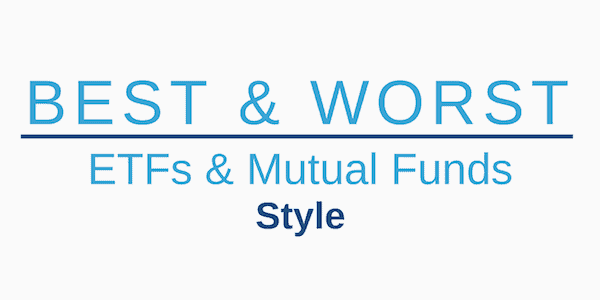The Large Cap Value style ranks second out of the twelve fund styles as detailed in our 2Q19 Style Ratings for ETFs and Mutual Funds report. Last quarter, the Large Cap Value style ranked third. It gets our Attractive rating, which is based on an aggregation of ratings of 68 ETFs and 934 mutual funds in the Large Cap Value style as of April 23, 2019. See a recap of our 1Q19 Style Ratings here.
Figures 1 and 2 show the five best and worst rated ETFs and mutual funds in the style. Not all Large Cap Value style ETFs and mutual funds are created the same. The number of holdings varies widely (from 13 to 1124). This variation creates drastically different investment implications and, therefore, ratings.
Investors seeking exposure to the Large Cap Value style should buy one of the Attractive-or-better rated ETFs or mutual funds from Figures 1 and 2.
Our Robo-Analyst technology[1] empowers our unique ETF and mutual fund rating methodology, which leverages our rigorous analysis of each fund’s holdings.[2] We think advisors and investors focused on prudent investment decisions should include analysis of fund holdings in their research process for ETFs and mutual funds.
Figure 1: ETFs with the Best & Worst Ratings – Top 5
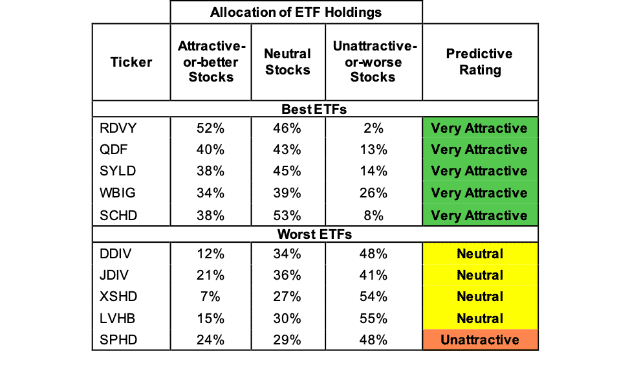
* Best ETFs exclude ETFs with TNAs less than $100 million for inadequate liquidity.
Sources: New Constructs, LLC and company filings
Aptus Fortified Value ETF (FTVA) and Columbia Sustainable Global Equity Income (ESGW) are excluded from Figure 1 because their total net assets (TNA) are below $100 million and do not meet our liquidity minimums.
Figure 2: Mutual Funds with the Best & Worst Ratings – Top 5
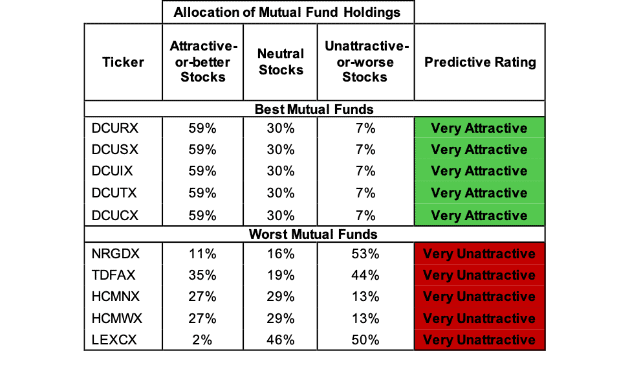
* Best mutual funds exclude funds with TNAs less than $100 million for inadequate liquidity.
Sources: New Constructs, LLC and company filings
First Trust Rising Dividend Achievers ETF (RDVY) is the top-rated Large Cap Value ETF and Deutsche DWS CROCI U.S. Fund (DCURX) is the top-rated Large Cap Value mutual fund. Both earn a Very Attractive rating.
Invesco S&P 500 High Dividend Low Volatility ETF (SPHD) is the worst rated Large Cap Value ETF and Voya Corporate Leaders Trust Fund (LEXCX) is the worst rated Large Cap Value mutual fund. SPHD earns an Unattractive rating and LEXCX earns a Very Unattractive rating.
The Danger Within
Buying a fund without analyzing its holdings is like buying a stock without analyzing its business and finances. Put another way, research on fund holdings is necessary due diligence because a fund’s performance is only as good as its holdings’ performance. Don’t just take our word for it, see what Barron’s says on this matter.
PERFORMANCE OF HOLDINGs = PERFORMANCE OF FUND
Analyzing each holding within funds is no small task. Our Robo-Analyst technology enables us to perform this diligence with scale and provide the research needed to fulfill the fiduciary duty of care. More of the biggest names in the financial industry (see At BlackRock, Machines Are Rising Over Managers to Pick Stocks) are now embracing technology to leverage machines in the investment research process. Technology may be the only solution to the dual mandate for research: cut costs and fulfill the fiduciary duty of care. Investors, clients, advisors and analysts deserve the latest in technology to get the diligence required to make prudent investment decisions.
Figures 3 and 4 show the rating landscape of all Large Cap Value ETFs and mutual funds.
Figure 3: Separating the Best ETFs from the Worst Funds
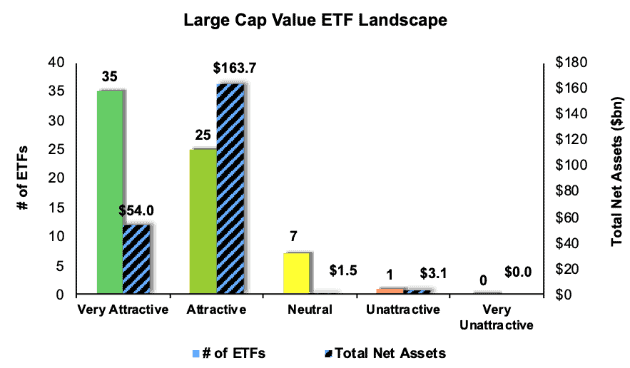
Sources: New Constructs, LLC and company filings
Figure 4: Separating the Best Mutual Funds from the Worst Funds
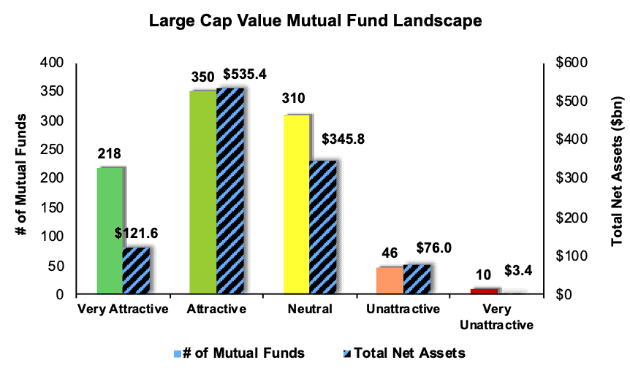
Sources: New Constructs, LLC and company filings
This article originally published on April 23, 2019.
Disclosure: David Trainer and Kyle Guske II receive no compensation to write about any specific stock, style, or theme.
Follow us on Twitter, Facebook, LinkedIn, and StockTwits for real-time alerts on all our research.
[1] Harvard Business School features the powerful impact of our research automation technology in the case New Constructs: Disrupting Fundamental Analysis with Robo-Analysts.
[2] Ernst & Young’s recent white paper “Getting ROIC Right” proves the superiority of our holdings research and analytics.
